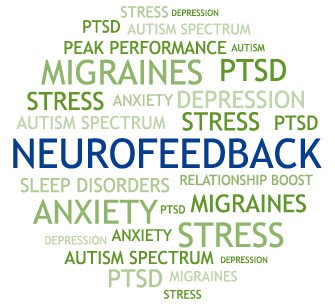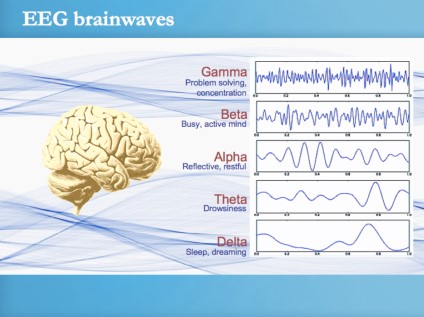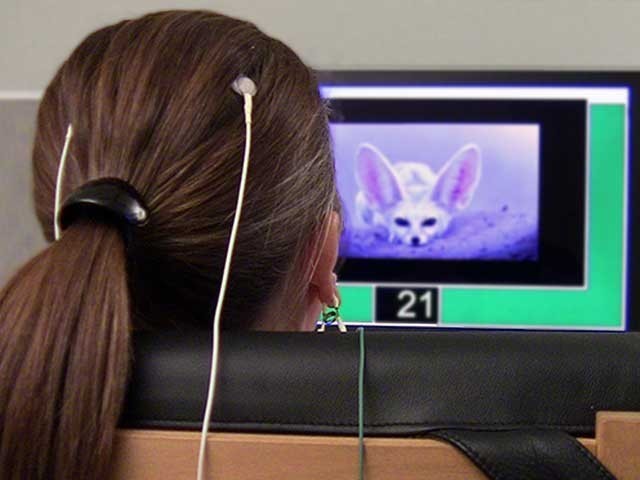Click on the image below to access this full document

The goal of Neurofeedback is to assist the brain in training itself to use more  effective firing patterns and become better regulated. A well-regulated brain is more effective in daily functioning when it effectively can manage its levels of :
effective firing patterns and become better regulated. A well-regulated brain is more effective in daily functioning when it effectively can manage its levels of :
Communication between neurons in the brain is an electrical event. This gets reflected and recorded via EEG (Electro Encephalogram). Different waveforms reflect certain mental states and can be trained via Neurofeedback equipment. The brain is the regulator of our body processes like sleep, wakefulness, thinking, emotions and behaviour.
Electrical activity being  produced in the brain can be displayed on a computer screen virtually almost instantly. EEG-Biofeedback involves recording this information via electrodes placed on the scalp and displaying it. This is then fed back onto the computer screen. When the brain receives information about itself, it has a capacity to change. Neurofeedback uses this information to encourage the brain to make adjustments in the amplitude of the brainwaves that it produces and this has an effect on regulatory mechanisms in the midbrain (Thalamo-cortical loop) These functions are fundamental to brain regulation. Neurofeedback increases state flexibility and also helps to activate specific regions or networks in the brain.
produced in the brain can be displayed on a computer screen virtually almost instantly. EEG-Biofeedback involves recording this information via electrodes placed on the scalp and displaying it. This is then fed back onto the computer screen. When the brain receives information about itself, it has a capacity to change. Neurofeedback uses this information to encourage the brain to make adjustments in the amplitude of the brainwaves that it produces and this has an effect on regulatory mechanisms in the midbrain (Thalamo-cortical loop) These functions are fundamental to brain regulation. Neurofeedback increases state flexibility and also helps to activate specific regions or networks in the brain.
Clients receive feedback or output signals that relate to their own subconscious neural activities. Thus, Neurofeedback is a self-regulating skill that inspires growth through self-awareness. Trainees are informed via auditory or graphic signals, each time the brain operates more efficiently. More importantly, the trainee learns how to access the improved state of mind for future use outside the training /therapeutic setting. Neurofeedback is similar to a comprehensive exercise program as it strengthens neural pathways while increasing mental endurance and flexibility (brain plasticity)
Expected effects of training:
How does the process work?
Sensors are placed on the scalp to record the brainwave activity. Special EEG software and amplifier is linked to the computer in front of the client. Specially designed computer games or feedback screens are then operated with pre-set brainwave targets. When the client increases and/or decreases the brainwave amplitudes as set out by the pre-set goals, visual and auditory feedback indicates the success of change in self- regulation that is achieved by the client. This operant conditioning is effective in establishing new patterns of change. When repeated enough, the flexibility in mental states can be managed by the client in real life. A client would need from 10 up to 60 sessions depending on the changes needed for effective self-management.

One of the best assessment tools available to a Neurotherapist, is a QEEG (Brain Map) that helps in comprehensive training decisions. The Brain map information will be correlated with functional difficulties that the client experience.
Multicolour brain maps show which part of the cerebral cortex are operating outside of normal limits. Each region of the brain is associated with specific functional operations. Neurofeedback technology gives the clinician tools to assess and train these areas that relate to problems being experienced.
The Integrative Visual and Auditory Assessment is able to indicate if the client has difficulties with visual or auditory processing or sustained attentional difficulties. Sensory Profiling will also be correlated with the difficulties that the brain might experience with receiving and processing sensory information from its environment.
Reported improvements experienced following Neurofeedback Training have been well documented in the Neurofeedback field:
Neurofeedback is usually used by Licensed Professionals that are registered with their professional boards. This modality is used in conjunction with other therapies that fall inside their scope of practice.
Neurofeedback can be used together with medication and cognitive therapies. Cases where medication reduction was made, in consultation with the client's physician, symptom reduction were noted as clients managed better self-regulation.
Neurofeedback is not a silver bullet; it will not fix all ailments and should not be labelled as a cure for any disorder. It is a training procedure that requires cooperation on the part of the trainee. The effectiveness of this program would be noticeable within the first 10 sessions. For a lasting change, in creating new patterns of regulating yourself, at least 20 to 40 sessions are recommended. Periodically even more might be necessary – refreshing the training previously done.
This is a guideline of how client need to prepare themselves for a EEG assessment (Brainmap assessment )